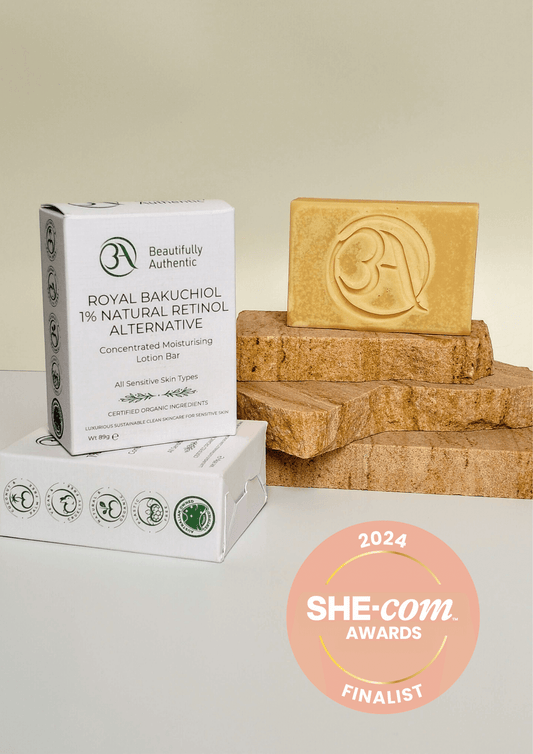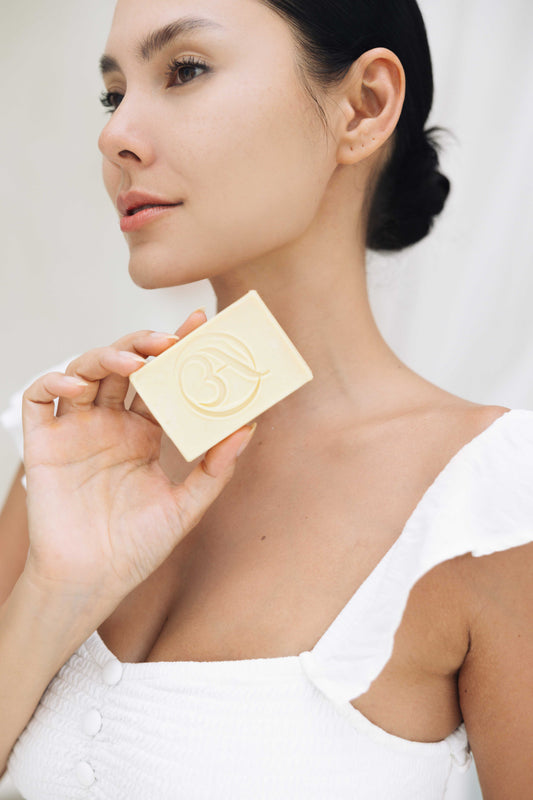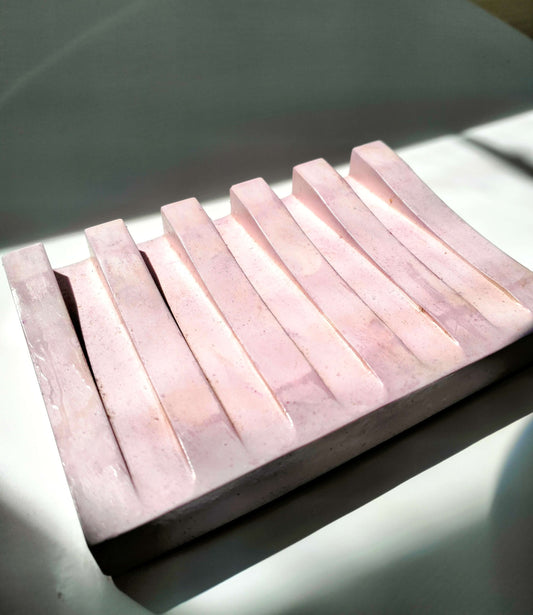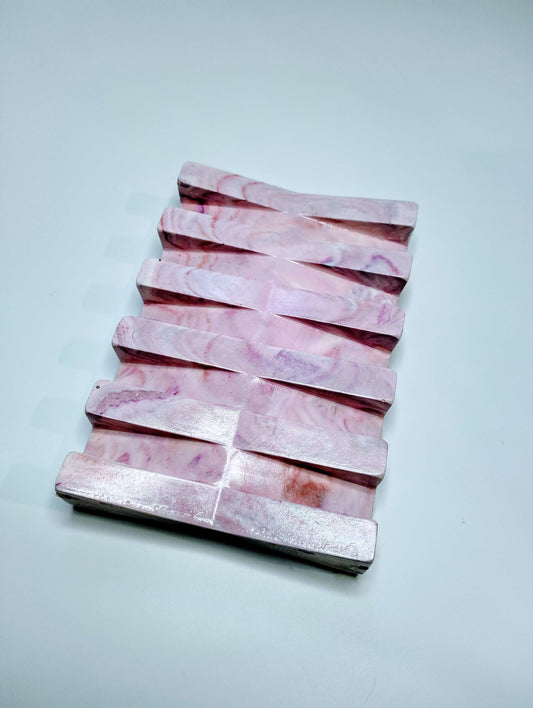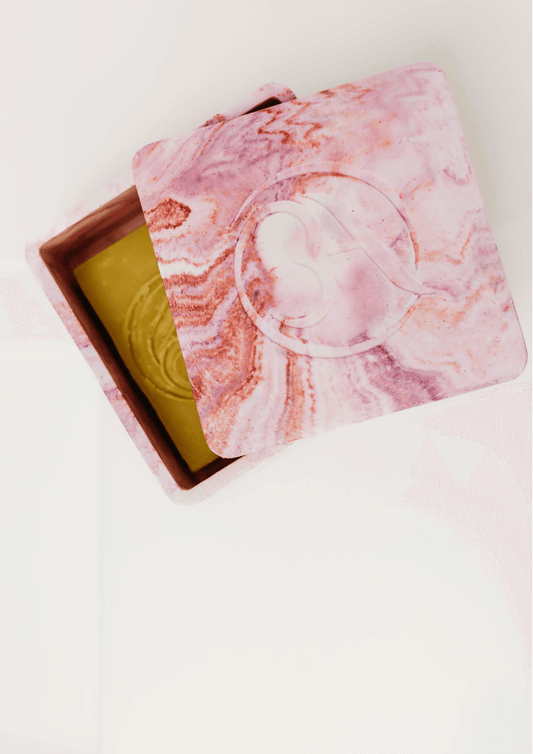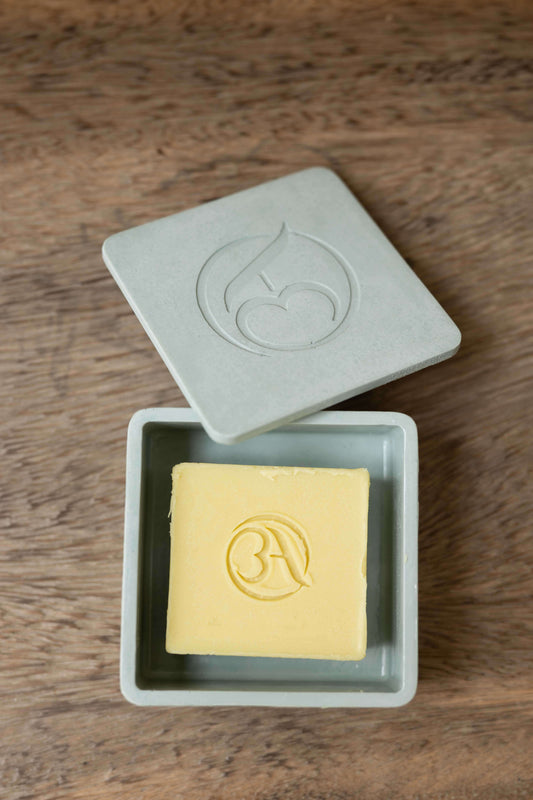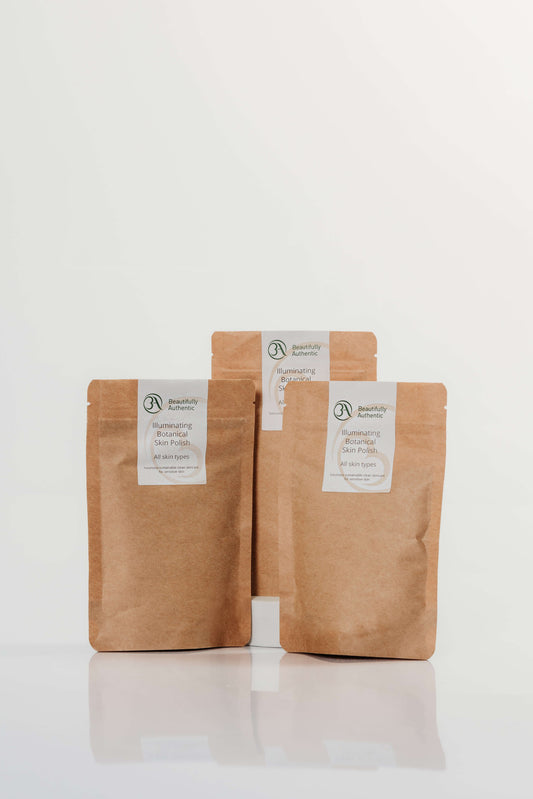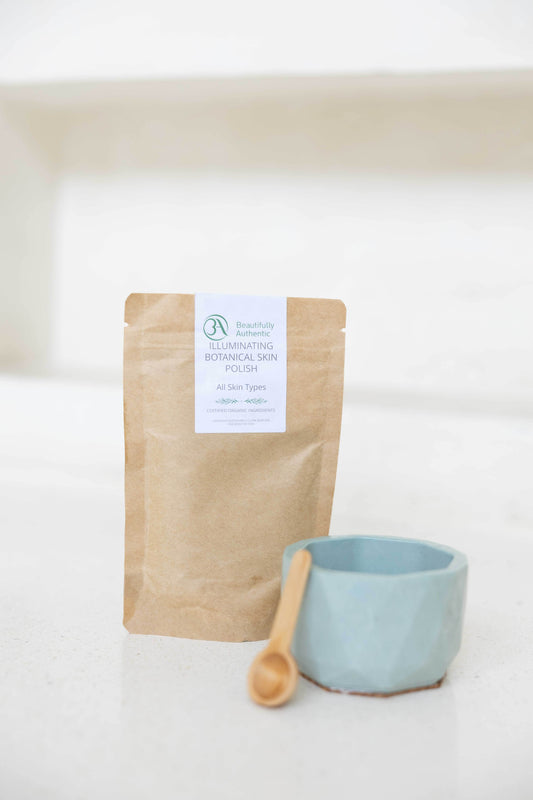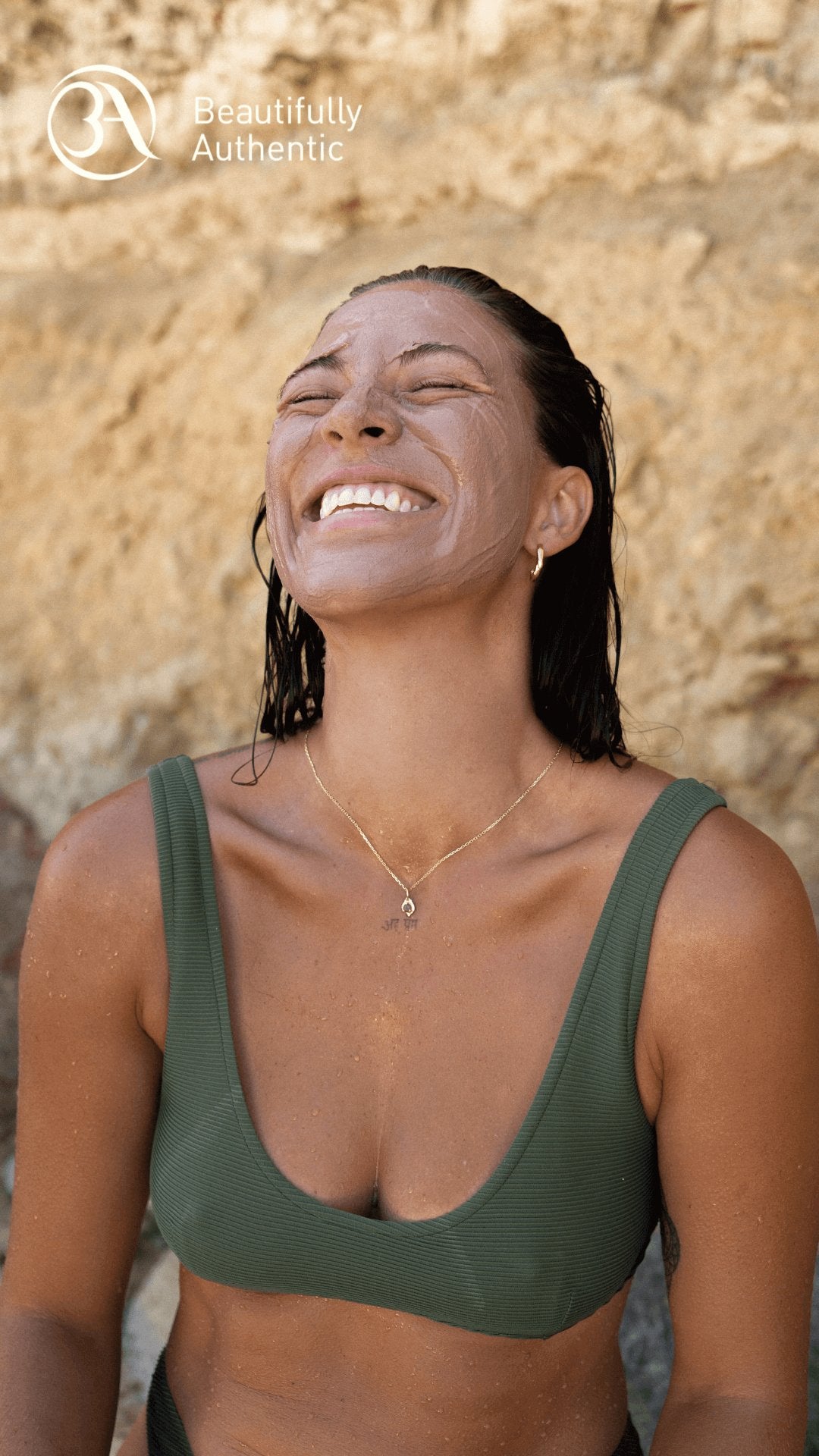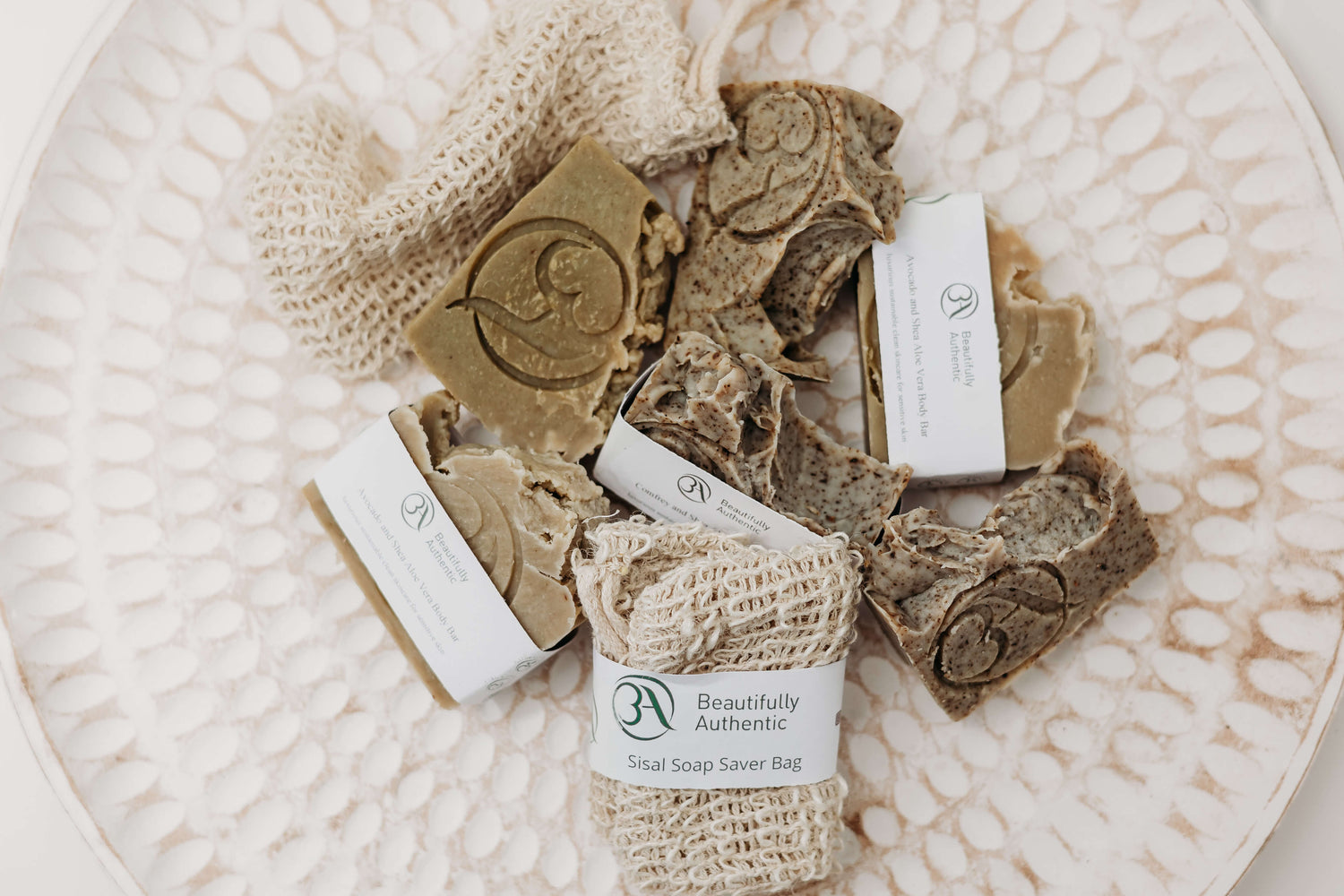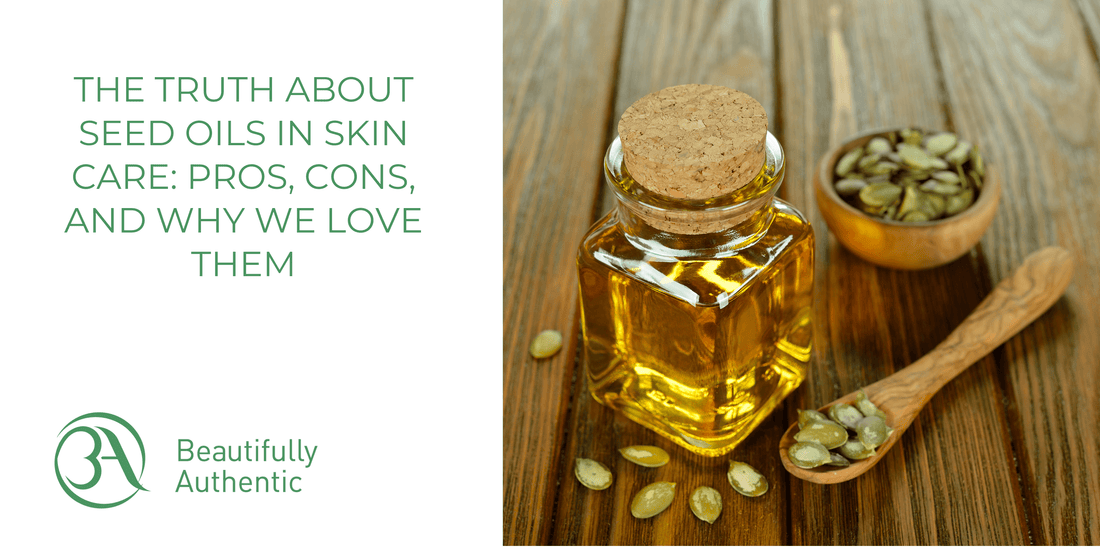
The Truth About Seed Oils in Skin Care: Pros, Cons, and Why We Love Them
Seed oils have become a hot topic in skin care, stirring up plenty of debate. Some trends and social media chatter label seed oils as the new “toxic” ingredient to avoid, while natural beauty enthusiasts swear by them for a radiant glow. So, what’s the truth? At Beautifully Authentic, we use a lot of cold-pressed seed oils in our skin and body care products, and we’re here to set the record straight – with a hefty dose of science. In this deep dive, we’ll explore the pros and cons of seed oils in skincare, address why some people think seed oils are “bad” for your skin, and reflect on how your choices stack up against the latest research.
What Are Seed Oils, and Why the Controversy?
Seed oils are simply oils extracted from the seeds of plants (as opposed to fruit pulp oils like olive or coconut). Common examples include sunflower, safflower, grapeseed, sesame, rosehip, and many more. These oils are packed with lipids (fats) that can moisturize and protect the skin. However, seed oils have also been at the center of a recent controversy. Why? Largely because of concerns that originated in the nutrition world and spilled over into skincare.
In the diet realm, there’s talk of the so-called “hateful eight” seed oils (like soybean, canola, corn, etc.) which in large amounts may contribute to health issues due to high omega-6 fatty acid content. The worries include: a high omega-6 to omega-3 ratio promoting inflammation, oils oxidizing into cell-damaging free radicals when overheated, and harsh industrial processing methods involving chemicals. It’s important to note that much of this applies to eating heavily processed seed oils in excess, not necessarily to putting natural seed oils on your face. As one dietitian aptly said, calling any single ingredient “toxic” is extreme – it’s all about quality and balance. Nonetheless, hearing “seed oils cause inflammation and aging” has understandably made some skincare lovers nervous.
So let’s separate fact from fiction. Topical application vs. diet: When you apply high-quality seed oils to the skin, most of the oil’s molecules remain on the surface, forming a protective layer to lock in moisture. Only small components (like free fatty acids, if present) might penetrate the outer skin layer, and a good cold-pressed oil actually has low levels of free fatty acids to begin with. In other words, your skin isn’t deep-frying these oils or shuttling them straight into your bloodstream. Using a well-made seed oil moisturiser is a completely different scenario from guzzling a jug of cheap cooking oil.
The Beautiful Benefits of Seed Oils for Skin
Despite the recent drama, the pros of seed oils in skincare are abundant – especially when you use unrefined, cold-pressed oils (like we do at Beautifully Authentic). Here are some science-backed benefits that might make you fall in love with these natural oils all over again:
- Rich in Essential Fatty Acids (EFAs): Many seed oils are high in linoleic acid, an omega-6 fatty acid that your skin loves. Topically, linoleic acid helps fortify the skin’s barrier, keeping it hydrated and calm. Oils with higher linoleic content (think safflower, grape seed, rosehip) have been shown to improve skin barrier function and reduce water loss. In fact, linoleic acid can signal the skin to repair itself – it activates PPAR-α receptors, encouraging the production of lipids and new cells to strengthen the stratum corneum (outer skin layer) (1). For those with acne-prone or oily skin, linoleic-rich oils tend to be lighter and less pore-clogging, and there’s even evidence that deficient linoleic acid in skin can contribute to acne. Using oils high in this fatty acid may help balance sebum and reduce breakouts over time.
- Deep Moisturization and Skin Barrier Support: Seed oils are superb natural moisturizers. They’re lipophilic (oil-loving), which means they easily mingle with our skin’s own oils to soften and seal in hydration. When you smooth a few drops of a good seed oil blend onto your face, it forms an occlusive yet breathable layer that prevents transepidermal water loss – say goodbye to dry, flaky skin. For example, sunflower seed oil, which is loaded with EFAs, has been shown to improve hydration and preserve the skin’s barrier without causing irritation (1). Many seed oils also contain phytosterols (plant fats) that can bolster barrier function and relieve dryness. In short, these oils help keep your skin’s lipid layer happy and intact – crucial for that dewy, plump look.
- Packed with Vitamins and Antioxidants: Seed oils are little powerhouses of skin-loving nutrients. Cold-pressed oils retain naturally occurring vitamins like A, C, and E, plus polyphenols and other antioxidants. Take rosehip seed oil for instance – it’s famous for its vitamin A (as natural trans-retinoic acid) and vitamin C content, which can brighten skin and improve texture. These nutrients can stimulate cell turnover (for smoother skin) and boost collagen production. Pomegranate seed oil contains rare omega-5 fatty acids and is rich in antioxidants; studies show it boosts levels of our skin’s antioxidant enzymes (like glutathione peroxidase and catalase) and can even stimulate keratinocyte (skin cell) growth, aiding repair (2). Vitamin E, abundant in oils like hemp, avocado, and apricot kernel, is a potent free-radical scavenger – it helps neutralize the oxidative stress our skin faces from UV rays and pollution. This means seed oils can actually protect against signs of aging by preventing environmental damage. (Think of them as a nourishing green smoothie for your face.)
- Anti-Inflammatory and Healing Properties: Many seed oils aren’t just neutral moisturizers – they actively soothe and heal. Hemp seed oil, for example, has a near-ideal ratio of omega-6 (linoleic) to omega-3 (alpha-linolenic) fatty acids, plus gamma-linolenic acid (GLA). This composition gives it notable anti-inflammatory powers. A recent case study in Poland found that applying hemp seed oil daily dramatically calmed eczema symptoms – reducing redness, itching, and skin roughness in just three months (3). Similarly, rosehip oil has been shown to tame inflammation; its fatty acids and antioxidants can help ease conditions like rosacea or post-acne irritation. There’s exciting evidence that rosehip may aid wound healing and scar reduction: in clinical trials, patients who applied rosehip oil to surgical scars had significantly less redness and discoloration, and even burn patients’ wounds healed faster with rosehip extract ointment compared to standard treatment. Pomegranate seed oil also shines here – research indicates it has anti-inflammatory, antifungal, and antibacterial effects on skin, even helping to reverse certain toxin-induced skin damage in studies (4). If your skin is sensitive or upset, the right seed oils can be like a calming hug, reducing redness and helping blemishes or irritations resolve more quickly.
- Supports Anti-Aging and Skin Regeneration: Who doesn’t want firmer, smoother skin? Seed oils can help in that department too. Avocado oil (yes, the lush green oil pressed from the humble avocado’s seed and flesh) is rich in oleic acid and sterolins, and it penetrates deeply. It has shown an ability to boost collagen synthesis in the skin and accelerate wound healing. In one study, using avocado oil led to increased collagen density and fewer inflammatory cells in wound sites, meaning it helped repair tissue more efficiently. More collagen and less inflammation = a recipe for youthful skin. Oils like avocado, camellia, and raspberry seed also contain polyphenols and carotenoids that can improve elasticity and reduce the appearance of fine lines. Camellia seed oil (also called Tsubaki oil), a favorite in Japanese beauty traditions and used by geishas historically, is loaded with oleic acid, vitamins, and squalene. It’s acclaimed for its anti-aging benefits – helping to smooth wrinkles and even out hyperpigmentation over time. In fact, camellia oil’s antioxidants help fade dark spots by inhibiting tyrosinase (an enzyme involved in melanin production), potentially brightening the complexion. Used consistently, seed oils can nurture your skin into a healthier, bouncier state – naturally.
- Balances and Conditions Various Skin Types: It might sound odd that applying oils can balance oily skin, but it’s true. By providing the skin with essential fatty acids and emollients, seed oils can signal overactive sebaceous glands to chill out. For instance, lightweight oils like jojoba (technically a wax ester, but often grouped with seed oils) mimic our natural sebum and can regulate oil production. High-linoleic oils like grapeseed have been used by those with acne-prone skin to help reduce clogged pores – one theory is that acne-prone individuals often have sebum low in linoleic acid, so replenishing it makes the sebum less sticky. On the flip side, if you have very dry or mature skin, richer seed oils like avocado or pomegranate can deeply nourish and soften. The beauty of seed oils is the variety: there’s an oil (or blend) for everyone. At Beautifully Authentic, we strategically combine oils like rosehip, hemp, apricot, etc., to create a texture that’s hydrating but not greasy, absorbing nicely into the skin. The result is soft, glowing skin that isn’t overloaded or stripped – a healthy balance.
A Quick Tour of Our Favorite Seed Oils: To give you a more personal peek, here are some of the seed oils we use in our products and why we adore them:
- Rosehip Seed Oil (Rosa canina): A cold-pressed wonder packed with vitamins A and C and omega-3/6 fatty acids. Rosehip is famed for its anti-aging prowess – it can improve skin texture, fade scars and sun spots, and boost radiance. It has natural retinoic acid that gently promotes cell turnover (without the irritation of synthetic retinol) and anti-inflammatory components to calm redness. No wonder research shows it significantly improves post-surgical scars and speeds up wound healing (4). This oil gives your skin a rejuvenating kickstart each day.
- Hemp Seed Oil (Cannabis sativa): Don’t worry, it won’t get you high – but it might get your skin to a higher level of health! Hemp seed oil is a green-hued, lightweight oil rich in linoleic and alpha-linolenic acids. It’s incredibly soothing for inflammatory conditions; it has helped eczema patients find relief by reducing itch and redness. Hemp oil also provides a delicate balance of hydration without clogging pores (its comedogenic rating is virtually zero) (3). It’s like a superfood smoothie for sensitive or acne-prone skin, delivering nutrients and calming goodness.
- Avocado Oil (Persea americana): Thick, green, and luxuriously nourishing – avocado oil is extracted from the fatty fruit’s seed and pulp. It’s high in oleic acid which gives it a rich emollient feel, great for dry skin. But beyond moisture, avocado oil has proven skin-repair benefits: it can ramp up collagen production and decrease inflammation during wound healing. It’s also full of vitamin E and potassium, and even offers a bit of natural sunscreen-esque effect (some studies suggest it can partially protect against UV-induced damage). We love avocado oil for giving a plumped, comforted look to the skin – think of it as a cozy blanket on a cold day.
- Raspberry Seed Oil (Rubus idaeus): A delicate, golden oil that’s a secret multitasker. Raspberry seed oil contains a mix of omega-6 and omega-3 fatty acids and is very high in tocopherols (vitamin E) and polyphenols. This gives it strong antioxidant properties – it helps neutralize free radicals and can soothe skin inflammation. A fascinating fact about raspberry seed oil is that it may provide some natural UV protection. One analysis found it has an SPF roughly equivalent to ~28-50 against UVB rays and UVA blocking potential, thanks to its carotenoids and antioxidants (5). However, we’ll be the first to say: please don’t toss your sunscreen in favor of raspberry oil! Consider it an extra boost alongside proper SPF. We include it for its nourishing and protective benefits, which contribute to smoother, calmer skin (and it gives our blends a silky feel).
- Apricot Kernel Oil (Prunus armeniaca): Pressed from apricot seeds, this light oil is a gentle emollient suitable for even sensitive skin and babies. It’s high in oleic and linoleic acids, and contains vitamins A and E. Apricot oil softens and nurtures the skin, helping improve elasticity. It’s often praised for its non-greasy, fast-absorbing texture. We use it to impart a velvety finish to our body oils and creams. It basically says to your skin, “here, have a comforting hug.” If you’re new to facial oils, apricot kernel is like that friend who gets along with everyone.
- Grape Seed Oil (Vitis vinifera): A by-product of winemaking, grapeseed oil is a lightweight, satin-like oil that doesn’t clog pores. It’s extremely high in linoleic acid (around 70%), making it ideal for oily or combination skin that needs moisture balance. Grape seed oil also contains antioxidants such as vitamin E and proanthocyanidins. Some studies suggest it can help with acne – possibly by reducing clogged pores and delivering anti-inflammatory compounds. It’s easily absorbed and can even have a toning effect (many people swear it helps tighten the look of their skin). In our formulations, grapeseed oil brings quick hydration and a smooth glide, without any heaviness.
- Pomegranate Seed Oil (Punica granatum): A truly exotic oil with a unique fatty acid profile – over 60% punicic acid, a rare conjugated omega-5. Pomegranate seed oil is a rich source of antioxidants (it contains ellagic acid, among others) and has remarkable anti-inflammatory powers. Scientific studies have found that pomegranate seed oil extract can speed up skin recovery, fighting inflammation and even showing antifungal and antibacterial activity. Historically, pomegranate extracts have been used for healing wounds, and modern research confirms pomegranate can improve outcomes in skin injuries (with no adverse effects noted). For your skin, this means potential benefits in reducing redness, defending against environmental stress, and possibly even promoting firmness and elasticity (by encouraging keratinocyte proliferation and inhibiting damaging enzymes). We include pomegranate oil to give your skin that regenerative, anti-aging boost – it’s like a resilience potion in a bottle.
- Camellia Seed Oil (Camellia japonica): Also known as Tsubaki oil, this is the beauty secret of East Asia. Camellia oil has a high oleic acid content (similar to olive oil, but without olive’s heaviness) and is brimming with vitamins, squalene, and polyphenols. It’s deeply hydrating and fast-absorbing, leaving skin supple but not greasy. One big plus: camellia oil is non-comedogenic (won’t clog pores) and tends to be very gentle. It’s suitable even for oily or sensitive skin types. Camellia oil helps strengthen the skin barrier and reduces transepidermal water loss. And thanks to antioxidants, it has anti-aging benefits – helping protect from free radical damage and even brightening the skin by reducing the appearance of dark spots over time. We love how this oil gives a smooth, almost velvety finish. It’s a key player in making our products feel elegant and nurturing.
Each of these oils (and others we use) brings something special to the formula. By blending them, we aim to create a synergistic effect where your skin gets a bit of everything: hydration, nourishment, protection, and repair. The bottom line: seed oils, when chosen and used wisely, can be your skin’s best friend, providing natural care that’s backed by both tradition and scientific research.
The Potential Cons of Seed Oils (and How to Avoid Them)
To present a fair story, let’s talk about the cons or concerns surrounding seed oils in skin care. While we clearly have a soft spot for these oils, we acknowledge that they’re not magic for absolutely everyone or used in any which way. Here are the main criticisms and how to navigate them:
-
Oxidation and Free Radical Formation: You might have heard the claim that “seed oils oxidize on your skin and cause aging.” It’s true that polyunsaturated fats (PUFAs) are more prone to oxidation than saturated fats. If a seed oil is poor quality or stored improperly, it can go rancid – meaning it’s oxidized and filled with unstable compounds. Applying rancid oil would indeed be bad news for skin, potentially generating free radicals that could damage cells. However, the solution is simple: use fresh, high-quality oils. Cold-pressed seed oils naturally contain antioxidants like vitamin E that delay oxidation. We also pack our oils in dark, airtight bottles and advise storing them in cool, dark places. This keeps them stable. In other words, your face oil isn’t getting heated to frying temperatures (please don’t cook your face!), so the oxidation risk is minimal if you use your products within their shelf life. If you’ve ever opened an old oil that smells “off,” you know it’s gone bad – don’t use it. But a well-kept seed oil used in a timely fashion will nourish, not harm. Bonus tip: applying oils under sunscreen in the morning or using them at night can further ensure UV light isn’t causing any oxidation on the skin. We formulate with antioxidant-rich oils to give your skin an extra shield against any rogue free radicals.
- Potential for Acne or Clogging: Not all oils are created equal in how they interact with different skin types. Some heavier seed oils (especially those high in oleic acid) can be too occlusive for oily, acne-prone skin and might contribute to breakouts in those individuals. For example, unrefined sunflower or safflower oil are usually great (they’re high in linoleic acid and generally non-comedogenic), but some dermatologists caution that certain formulations with these or similar oils could clog pores for some people. The key here is knowing your skin and the oil’s properties. If you have acne-prone skin, you’ll likely do better with lighter oils like grapeseed, rosehip, or hemp (all low on the comedogenic scale), rather than something like pure cocoa butter or flaxseed oil on your face. We purposely avoid highly comedogenic oils in facial products, and we often blend oils to balance out textures. Additionally, using an appropriate amount is important – a few drops spread over the skin is sufficient; slathering a thick layer (especially over already oily skin) might be asking for trouble. It’s also worth noting that everyone’s skin is unique. One person’s holy grail oil could be another’s breakout trigger. If you’re trying a new seed oil, patch test it or introduce it slowly. When formulated correctly and used in moderation, seed oils should not be causing acne for the vast majority of people. In fact, as noted, some can actually help clear the skin by reducing inflammation and balancing sebum. But always listen to your own skin’s feedback.
- High Omega-6 Content and Inflammation Concerns: Some critics claim that since many seed oils are high in omega-6 linoleic acid, they inherently promote inflammation, which could accelerate aging or irritate conditions like acne, eczema, or psoriasis. This idea largely stems from dietary studies – eating a diet extremely high in omega-6 (especially without enough omega-3) can tilt the body towards inflammation. However, applying a linoleic-rich oil on your skin is not the same as flooding your diet with fried foods. Topically, linoleic acid is actually anti-inflammatory for the skin and beneficial for conditions like eczema and acne (where it helps restore a lipid your skin is missing). Context matters: our skin’s outer layer enjoys linoleic acid to stay healthy; it’s when our whole body is imbalanced with omega-6 that there’s an issue. Even so, some dermatologists advise moderation – they might say to avoid products where cheap omega-6 seed oils (like soybean or generic vegetable oil) are the main ingredient, just to err on the side of caution. We agree that quality is key. We choose oils not just because “omega-6 = good” or “omega-9 = bad” – we choose them for the overall profile (including natural antioxidants, the presence of calming compounds, etc.). Also, many of our oils contain a mix of fatty acids, not just omega-6. For example, hemp and raspberry have some omega-3; camellia and avocado have a lot of omega-9. This diversity means you aren’t hitting your skin with a one-note diet. Our philosophy: give the skin a balanced “fatty acid menu,” much like you’d want balance in your food diet.
- Allergies or Sensitivities: As with any natural product, there’s a chance of individual allergy or sensitivity. If you have a known nut or seed allergy, you must exercise caution with seed oils. For instance, apricot kernel oil could potentially bother someone with a severe almond allergy (they’re from similar families). Most seed oils we use are generally very hypoallergenic (e.g., sunflower, hemp, jojoba are low risk), but always patch test a new oil on a small area of skin if you’re unsure. Additionally, pure oils lack preservatives – which is good for avoiding certain chemicals – but that also means they can grow microbes if contaminated. Keep the dropper or bottle opening clean and don’t let water in. In our blends, we include natural antioxidants (like cocoa butter) to keep the oils fresh, but we avoid harsh preservatives. Treat your oils with the same cleanliness you’d treat food. If you do experience any reaction (very rare with pure seed oils), discontinue and consult a dermatologist to pinpoint the culprit. We formulate carefully to eliminate common irritants (for example, we use fragrance-free, and we don’t use essential oils that might cause allergic reactions, focusing on fixed seed oils which are much safer).
-
Not a Complete Routine? Actually, They Can Be — If You Use Them Beautifully
Let’s clear something up. While it’s true that seed oils don’t contain water and therefore don’t directly hydrate the skin, that doesn’t mean they’re lacking. In fact, when used with intention and the right ritual — like we advocate at Beautifully Authentic — oils can be the only product you need after cleansing. Here’s the key: we don’t layer water-based serums or humectants in our skincare philosophy. Instead, we embrace a slower, more intuitive approach. After cleansing, your skin is already damp — and that’s the hydration your skin needs. Our concentrated moisturising lotion bars are designed to be applied straight onto that freshly cleansed, slightly moist skin, locking in all that goodness and preventing transepidermal water loss. What makes our bars even more effective than oils alone is the addition of candellila wax. This plant-based wax doesn’t just sit on top — it helps the oils absorb deeply, creating a protective barrier while still allowing your skin to breathe. That’s what makes our bars concentrated yet weightless, deeply nourishing without the greasy finish that some oils can leave behind. So while many modern routines rely on multiple steps and layers, we’ve simplified things — not by cutting corners, but by formulating smarter. Our bars are rich in antioxidants, essential fatty acids, and skin-repairing nutrients that work beautifully without needing to be “sealed in” with five other products. Just water, a bar, and a mindful moment of care. Of course, we always recommend a broad-spectrum sunscreen if you’re heading out into the sun. While some seed oils like raspberry and avocado do offer minor UV support, they’re not a replacement for SPF. Think of your skincare as a partnership between your routine and your lifestyle — gentle, supportive, and guided by nature.
- Misinformation and Marketing Hype: Lastly, one of the “cons” of seed oils is the sheer confusion caused by conflicting info out there. Some brands market “seed oil-free” skincare as if it’s automatically superior, while others (like us) champion seed oils. Who should you trust? This comes down to critical thinking and, yes, some self-reflection. We encourage you to examine why you might believe seed oils are bad. Is it due to a viral TikTok or a one-size-fits-all claim? Science often lives in the gray area – it’s about specifics. Which oil? Used how? In what person? Instead of demonizing all “seed oils,” it makes more sense to talk about which ones to use and how to use them. As one dermatologist noted, a single ingredient can be beneficial for some and problematic for others. For instance, coconut oil (not a seed oil, but a natural oil) can break some people out yet be a miracle for others’ eczema. Blanket statements can mislead you. At Beautifully Authentic, we strive to be transparent about why we choose each ingredient. We won’t promise that everyone in the world will have glass skin just by using our seed oil blend – but we can share the genuine benefits backed by research and our experience, and help you make an informed choice. Beware of fear-based marketing on either side. The truth, as usual, is nuanced.
Beautifully Authentic’s Take: Cold-Pressed and Consciously Chosen
Our brand name, Beautifully Authentic, reflects our ethos: being real, being natural, and being backed by authenticity – which includes authentic science! We incorporate seed oils not because they’re trendy, but because we’ve seen their transformative effects and science validates their use. However, we’re very picky about which seed oils make the cut and how we use them. Here’s what sets our approach apart, and why it matters:
- Cold-Pressed = Maximum Goodness: All the seed oils we use are cold-pressed, meaning they’re extracted mechanically without high heat or chemical solvents. This is crucial. Industrial seed oils (like those used in fast food fryers) are often extracted with hexane, then bleached and deodorized at high temperatures. That process can strip away nutrients and create trans fats or impurities – not what you want on your skin! In contrast, cold-pressing preserves the vitamins, antioxidants, and essential fatty acids in their pure form. It’s like the difference between fresh-squeezed juice and juice from concentrate. By using cold-pressed oils, we ensure your skin is getting the full benefit of the plant, untainted by harsh processing. You’ll notice our oils often retain a slight natural scent or tint – that’s a sign of minimal processing. For example, our cold-pressed hemp seed oil has a green hue (rich in chlorophyll and beta carotene), and our rosehip oil is a vibrant amber. Those colors are nature’s own “certificate of authenticity” that the good stuff is intact.
- Quality over Quantity: We source our seed oils from trusted suppliers, often organic and small-farm when possible. Each batch is tested for purity and safety. We would rather formulate with a higher cost, excellent quality oil than use a cheaper refined version just to save a few bucks. This is part of being authentically committed to your skin’s health. Also, we use oils in optimal concentrations. You might notice some creams out there list a fancy seed oil on the label but it’s near the bottom of the ingredient list (meaning there’s a tiny drop of it). In our products, key oils are in significant amounts to truly deliver benefits. We often blend multiple seed oils to harness a broad spectrum of nutrients. It’s a bit like a balanced diet – your skin gets a buffet of vitamins and fatty acids. Each oil’s strengths cover for another’s weaknesses (for instance, one oil brings deep moisture, another brings light texture and antioxidants). We pay attention to details like the ratio of oleic to linoleic acid, ensuring the final product feels elegant, absorbs well, and works.
- No “Bad” Seed Oils – Context is Key: You might wonder, do we avoid any seed oils? We generally steer clear of oils that don’t align with our mission of maximizing skin benefits. For example, we don’t use plain canola or soybean oil in our skincare – not because they’re inherently evil (they actually contain linoleic acid too), but because there are more nourishing, antioxidant-rich options available, and those commodity oils are often heavily refined. We prefer rosehip over, say, cottonseed oil because rosehip comes with a treasure trove of actives for skin. We also formulate to suit skincare needs: high oleic oils like olive oil can disrupt some people’s barrier if used alone (as studies showed in newborn massage, olive oil wasn’t as gentle as sunflower oil). So instead of olive, we opt for gentler oleic-rich oils like camellia that also deliver extra benefits. In short, we don’t use seed oils that are only “filler”; every oil in our ingredient list has a purpose beyond just being a fat. This way, you’re not just avoiding the so-called “bad” oils – you’re actively feeding your skin the best oils.
- Science-Driven Formulation: We keep up with the latest research in dermatology and cosmetic science. If a study finds something noteworthy – say, that linoleic acid helps acne or that pomegranate extract aids wound healing – we take note. Our product development is informed by such findings. For instance, knowing that sunflower seed oil helps maintain the skin barrier in adults, we included sunflower in our soaps and some of our moisturisers for eczema-prone customers, but we balanced it with shea and castor to add GLA and other soothing compounds. We also pay attention to what not to do: we saw the evidence that olive oil might impair the skin barrier in some cases, so we avoid it in leave-on products for sensitive skin. By grounding ourselves in science, we avoid falling for fads or myths. We’re not here to jump on the “latest ingredient of the month” bandwagon unless it truly offers something. (Seaweed seed oil smoothie mask, anyone? If it ever becomes a thing, we’ll check the studies first!)
- Sustainability and Authenticity: Using plant-based oils fits into our sustainable and ethical values. Many seed oils come from by-products of agriculture – like grapeseed oil from the wine industry, or apricot kernel oil from fruit processing. By utilizing these, we reduce waste and support full use of the plant. We also ensure our oils are sourced with fair practices. Authenticity for us means being honest about our ingredients’ origins and their effects. We won’t tell you that using our seed oil blend will make you look 20 years younger overnight (we’d love it if that were true, but we live in reality!). What we will tell you is that our products can help your skin become healthier, more resilient, and naturally radiant over time. The glow you get won’t be an Instagram filter – it’ll be the real result of nourished skin. We think that’s far more empowering.
Reflecting on Your Skin Care Choices
At this point, we invite a bit of self-reflection. Think about the skincare choices you’ve made or advice you’ve followed. Have you ever avoided an ingredient (like seed oils) out of fear, without digging deeper into the facts? It’s easy to get swayed by trending narratives – after all, we’re bombarded daily with someone’s “Holy Grail” and another’s “Never put this on your face!” proclamation. But your skin is unique, and it deserves a personalized approach, not a generic rule from the internet echo chamber.
Consider how your skin has responded to products in the past. If you’ve used natural oil-based products and loved the results (maybe softer skin, less need for heavy creams, a certain glow that synthetic products didn’t give you), that’s valid evidence from your life. On the other hand, if you once tried a pure coconut oil and broke out, that doesn’t mean all oils are off the table – maybe a lighter seed oil would agree with you. Listen to your skin, and also listen to science. The scientific consensus doesn’t condemn all seed oils; instead, it highlights their benefits while cautioning that quality and formulation matter.
It’s also worth reflecting on the values behind your choices. Many who turn to seed oil-based skincare do so because they crave simplicity and nature in their routine (no long list of unpronounceable chemicals). That’s a valid desire – and you don’t have to sacrifice efficacy. As we’ve shown, there’s plenty of rigorous research supporting natural ingredients. You can be a nature-loving, clean beauty aficionado and still be scientific and skeptical in the right way. These are not mutually exclusive. In fact, we believe being authentic means aligning your skincare with both your personal values and evidence-based knowledge.
Ask yourself: What do I want from my skincare? If the answer is healthy, balanced, nourished skin (and perhaps a more eco-conscious, holistic routine), then well-crafted seed oil products can absolutely be your allies. If you’ve been avoiding them due to scary headlines, maybe it’s time to question those fears. The next time someone on social media dramatically declares “seed oils are skin poison!” or conversely that “seed oils cure everything!”, you’ll be equipped to cut through the noise. You know that pros and cons exist and that it comes down to specifics. By reflecting on your own skin’s needs and the information we’ve discussed, you can make a beautifully authentic choice – one that’s right for you.
Conclusion: Seed Oils – Friend, Not Foe (When Used Right)
In the grand story of skincare, seed oils are far from the villains some have painted them to be. Instead, think of them as humble heroes, drawn straight from nature’s apothecary. They carry the memory of sunshine and earth from the seeds they came from, and they offer that vitality to our skin. We’ve journeyed through the benefits – from essential fatty acids that rebuild your barrier, to antioxidants that slow down aging, to anti-inflammatory effects that rival some pharmaceuticals in soothing eczema or healing wounds. We’ve also candidly examined the concerns – and found that with a bit of knowledge and care (use high-quality, match to skin type, store properly), those cons can be well managed or even turned into non-issues.
For us at Beautifully Authentic, seed oils aren’t just ingredients; they’re core to our brand’s identity. They represent purity, efficacy, and trust in the gifts of nature – all refined by scientific understanding. We use them joyfully and confidently, because we’ve seen our customers’ skin transform with their use: calmer complexions, softer texture, diminished scars, and a restored glow. There’s something almost poetic about a seed, the origin of a new plant life, giving your skin new life and vibrancy.
In an industry often split between cutting-edge synthetics and traditional naturals, we like to take the best of both worlds: natural ingredients like seed oils, validated by science. We hope this deep dive has demystified seed oils for you. If you were on the fence or feeling uneasy due to anti-seed-oil hype, we encourage you to give these oils a fair chance – your skin might just say “thank you” with the best glow of its life.
At the end of the day, the goal is to make choices that are informed and aligned with your authentic self. So next time you pat on a luxurious rosehip or pomegranate rich moisturiser from Beautifully Authentic, you can do so with confidence, knowing the rich benefits it brings and that you’re part of a thoughtful, science-backed conversation – not just a fad. Here’s to embracing seed oils for what they truly are: beautifully authentic skincare straight from nature’s pantry, ready to help you shine from the inside out.
- https://pmc.ncbi.nlm.nih.gov/articles/PMC5796020/#:~:text=acid%20,enhances%20keratinocyte%20proliferation%20and%20lipid
- https://www.mdpi.com/1420-3049/28/2/903
- https://norml.org/news/2025/06/26/case-report-topical-application-of-hemp-seed-oil-mitigates-eczema-symptoms/#:~:text=seed%20oil%20topically%20for%20three,prior%20to%20going%20to%20sleep
- https://www.dermatologytimes.com/view/rosehip-oil-showed-significant-improvement-in-scar-healing
- https://www.cosmeticsdesign.com/Article/2023/05/02/Researchers-determine-topical-benefits-of-pomegranate-seed-oil/#:~:text=Pomegranate%20as%20a%20healing%20agent

